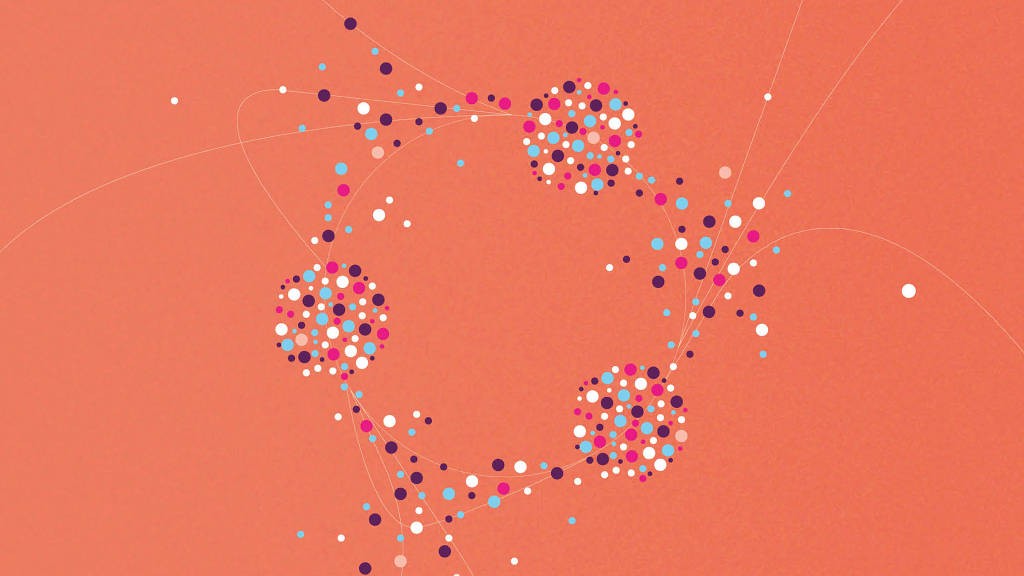STEELCASE 360° MAGAZINE: THE CREATIVE SHIFT
How Place + Technology + People Can Help Solve 21st Century Problems.
The shift has happened. We all saw change coming. Then suddenly it’s upon us and work is something fundamentally different. Today, we face problems too big, too complex to solve with yesterday’s ideas. The demand and desire for creativity at work is stronger than ever before.
“Ideas are the currency of the new economy.”
That quote came from Richard Florida, an economist and social scientist who authored The Rise of the Creative Class… over fifteen years ago in 2002.
Florida argued that creative work is not exclusively about artistic pursuits but rather a focus on generating new ideas and solving complex problems. He maintained that creativity was a critical skill for people to develop and for cities and businesses to foster if they wanted to thrive in the coming century. It was an idea that took time to build momentum.
Design thinking, the notion of using the same creative strategies designers employ to solve problems, was gaining traction around the same time. Ideas about creative work generated plenty of conversation – and Florida’s work spawned its share of debate— business leaders weren’t losing a lot of sleep over the creative output of their organization. They were far more focused on efficiency, getting lean and going global.
Fast forward to today and creativity is an idea whose time has come, on multiple fronts. Cities around the world that fostered great environments for creative work have thrived, as Florida suggested. People who lived through the cost squeeze of multiple recessions are looking for a deeper sense of meaning and purpose from their work, and stretching their creative muscles helps scratch that itch. Meanwhile, recent college graduates aren’t content to sit in a beige cubicle and do routine work just to make a paycheck, causing employers to rethink their strategies for attracting new talent.
At the same time, emerging technologies have grown so exponentially that they’ve ushered in “The Fourth Industrial Revolution,” according to Klaus Schwab, founder of World Economic Forum. “We stand on the brink of a technological revolution that will fundamentally alter the way we live, work and relate to one another,” he states. “In its scale, scope, and complexity, the transformation will be unlike anything humankind has experienced before.” Faced with these kinds of advances –which offer opportunities as well as stiff competition and disrupted markets – businesses realize that they can’t cost cut their way to growth. They need to refocus innovation. And it’s this drive for innovation, in increasingly complex conditions, that is causing a macro shift toward more creative work.
“Creativity isn’t a linear process. It’s not even a predictable process. It has a rhythm of different activities and requires both convergent and divergent thinking.”
JAMES LUDWIG, Vice President, Global Design, Steelcase
UNDERSTANDING CREATIVITY
In many organizations, however, creativity isn’t bubbling up spontaneously. Most employers say their organizations aren’t creative enough and most employees say they’re not living up to their creative potential on the job, according to Adobe’s State of Create 2016 study. Contrary to popular myth, creativity isn’t about a “Eureka!” moment that happens among truly brilliant people. Creative work is a process in which everyone can engage, if the conditions are right.
Steelcase and Microsoft joined forces to begin thinking about the challenges organizations and people face as they try to engage in more creative work. Understanding that both space and technology have a role to play in supporting this work, it was critical to begin with insights on how creativity happens.
“Creativity isn’t a linear process. It’s not even a predictable process,” according to James Ludwig, head of global design and product engineering at Steelcase. “It has a rhythm of different activities and requires both convergent and divergent thinking, with people coming together in small or large groups, and moving apart to do work alone.”
Linear Work: Segmented tasks completed in a progression
Creative Work: People and ideas diverge, converge and iterate
“Creativity is an inclusive process in which something new emerges,” says Ralf Groene, general manager of Microsoft Devices. “As creativity becomes central to our work, the importance of where we do it is being reaffirmed. The cloud and mobile technologies may be untethering us from the office, but our need and desire to do creative work is luring us back in.”
Yet, despite the desire to be more creative at work, the majority of people don’t believe they’re living up to their creative potential. The solution is finding the right balance between convergent and divergent thinking, and having the right range of spaces and technology to support all the diverse stages of creative work. In a recent Steelcase and Microsoft study, people reported the things that would help them be more creative are to have more time to think and time to be alone without disruptions.
“The way to support people is to provide the ability to move between individual time and collaborative time, having that rhythm between coming together to think about a problem and then going away to let those ideas gestate,” says Donna Flynn,vice president of WorkSpace Futures at Steelcase.
Dive deeper into Steelcase’s creativity and download the Steelcase 360° Magazine: Making the Creative Shift or listen to the podcast here.




